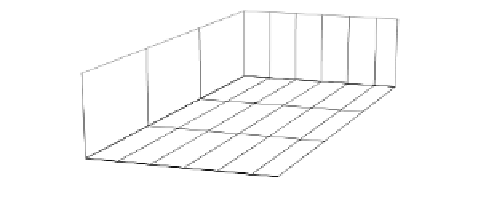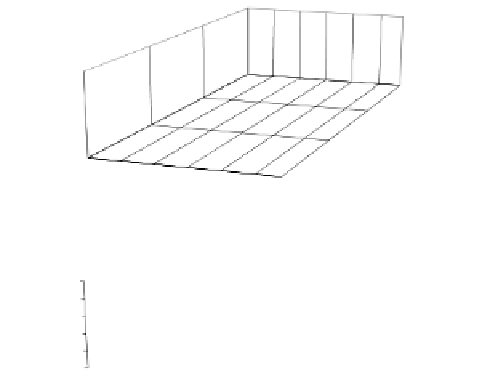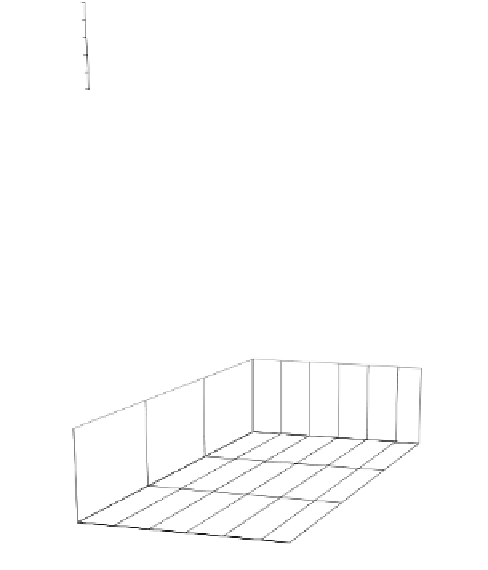Environmental Engineering Reference
In-Depth Information
(a)
100
80
60
5
40
Ex posure ti m e
[h]
3
20
0
1
0
3,2
6,4
De pth [cm]
9,6
12,8
16
(b)
100
80
60
5
40
Ex posure ti m e
[h]
3
20
0
1
0
3,2
6,4
9,6
De pth [cm]
12,8
16
(c)
100
80
60
5
40
Ex posure ti m e
[h]
3
20
0
1
0
3,2
6,4
9,6
12,8
Depth [cm]
16
Figure 2.
Vertical distribution of the population of three protozoa (a)
Coleps
, (b)
Paramecium
,
(c)
Euplotes
, at three different exposure times (1, 3 and 5 h) at 2.5 SU/h. The dotted columns
represent the vertical distribution of the protozoa exposed to UV-light; the white ones the dark test
cells and the striped ones the light control (redrawn from ref. 14).
These experiments lead to positive results: many microorganisms show a specific
UV sensitivity, and can perform an avoiding reaction when exposed to UV radiation;
moreover, the strength of this reaction seems to be inversely proportional to the relative
resistance against UV radiations, i.e., more resistant the organism, less evident the
reaction (see Fig. 2). Recent works seem to indicate that also
B. japonicum
has a
specific UV receptor
17
.
3. Recent studies on the effects of UV-B on ciliates
The effects of UV-B radiation have been studied in three species of ciliated
protozoa, two living in fresh-water,
Blepharisma japonicum
and
Ophryoglena flava
, and
a marine one,
Fabrea salina
18,19
. Motile and photomotile behaviour have been
investigated before and after UV exposure, with the aim of finding possible intracellular
targets of UV radiation.






















































































































































Search WWH ::

Custom Search